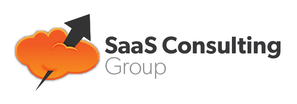|
By Pete Barlas, Investor’s Business Daily The cloud computing trend shows no sign of slowing, which is good news for cloud software vendors Salesforce.com and NetSuite. NetSuite (N)shares are up about 65% since May, while Salesforce.com (CRM) is up about 40% since August. Both companies are expected to post Q4 revenue growth of about 30% vs. Q4 2011, says Richard Baldry, an analyst for Wunderlich Securities. Salesforce.com and NetSuite are two of the cloud trend pioneers. AP View Enlarged Image  Cloud computing, where companies and other enterprises store and access their data and apps on distant data centers that they access via the Internet, continues to grow, Baldry says. “We are definitely seeing mainstream adoption pick up now,” he said. “Cloud computing tends to either drive revenue or help companies cut costs — everybody kind of understands that now.” Salesforce, a maker of customer relationship management software that helps companies manage their sales, marketing, customer service and technical support, is the largest cloud-only software vendor. NetSuite also sells CRM software, as well as enterprise resource planning software that helps companies improve business functions including finance and manufacturing. It also offers business accounting software and software to help manage e-commerce businesses. The fact that the two largest makers of business software — SAP (SAP) and Oracle (ORCL) — are also scrambling to build their own cloud-based businesses has fueled cloud adoption, Baldry says. “SAP and Oracle for years said this was not a good way to do business,” he said. “They have capitulated in the last two years and have been forced to acknowledge that this is the way the industry is moving. That’s helped buyers feel more comfortable with it.” Both Salesforce and NetSuite operate under the Software-as-a-Service model, which lets customers pay a monthly subscription fee for only the software they use, which they access via the Internet as needed. SaaS lets companies avoid spending millions of dollars on upfront licensing fees. Those big one-time payments can lead to unpredictable quarterly results if a few big deals fail to close at the end of a quarter, says Mark Schappel, an analyst for the Benchmark Group. SaaS makes things, all in all, a little steadier for investors. “With the subscription model, you don’t see those wide swings and gyrations,” he said, “… investors don’t have to worry about waking up the next day (after an earnings report) and seeing the stock down 15%.” Schappel says a growing number of customers are choosing the SaaS model when they replace software systems or integrate an acquired company. “You are not necessarily seeing large enterprises throw out their old software per se,” he said. “But when they buy new stuff or a new division or when an acquisition needs a new (software) system, they are looking at the SaaS companies more than they are the conventional software companies.” Salesforce and NetSuite are both expected to report smaller profit for their fiscal Q4s, mostly because of heavy spending to grow their businesses. For Salesforce.com’s fiscal Q4 ending in January, analysts polled by Thomson Reuters expect earnings per share minus items of 40 cents, down 3 cents from the year-ago period. Revenue is expected to rise 31% to $830.4 million. It hasn’t set a report date, but it will likely be in late February. Analysts expect NetSuite to post EPS ex items of 4 cents for its Q4 ended in December, down a penny from the year-ago period. Revenue is expected to rise 29.5% to $83 million. It’s slated to report on Jan. 31 after the close. Sales and marketing costs, as well as research and development costs, are crimping profit. NetSuite in particular is aggressively spending to ramp up its sales team. “With SaaS companies, investors aren’t really worried about earnings at the moment,” Schappel said. “They are looking at revenue growth and bookings growth.” Read the article here.
1 Comment
7/18/2022 01:15:29 am
Analysts expect NetSuite to post EPS ex items of 4 cents for its Q4 ended in December, down a penny from the year-ago period. Nice and informative post thank you!
Reply
Leave a Reply. |
Categories
All
|
Copyright © 2021 SaaS Consulting Group | 3345 Bee Caves Road, Suite 206/207, Austin, TX 78746 | [email protected]
Cookies make our website better. By using our website, you agree to our use of cookies. Privacy Policy
Cookies make our website better. By using our website, you agree to our use of cookies. Privacy Policy

 RSS Feed
RSS Feed